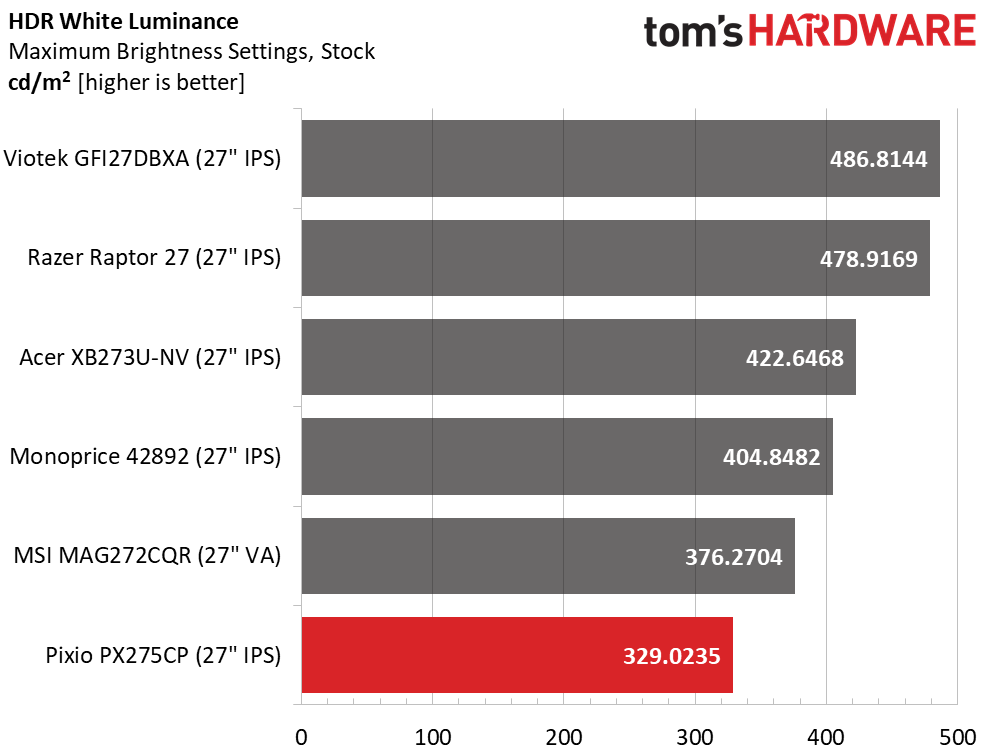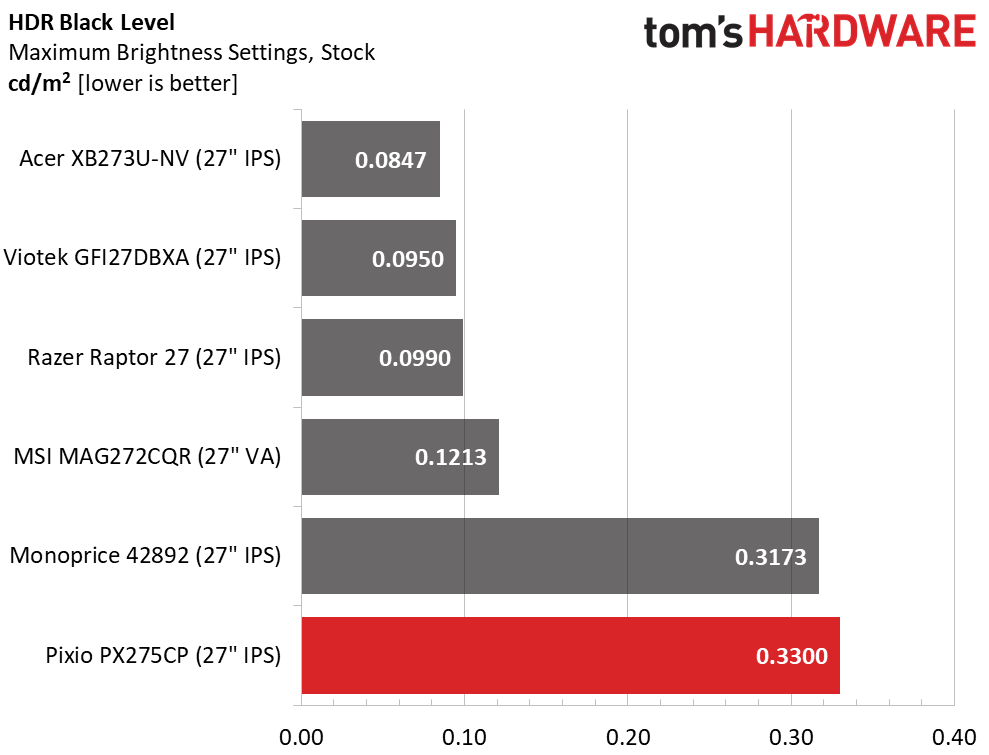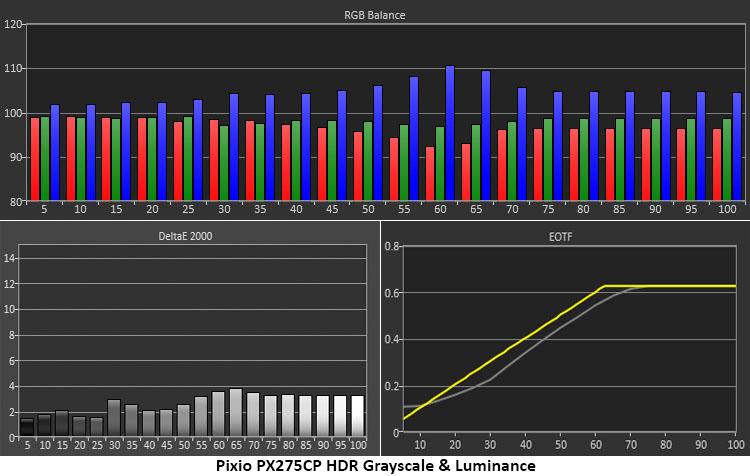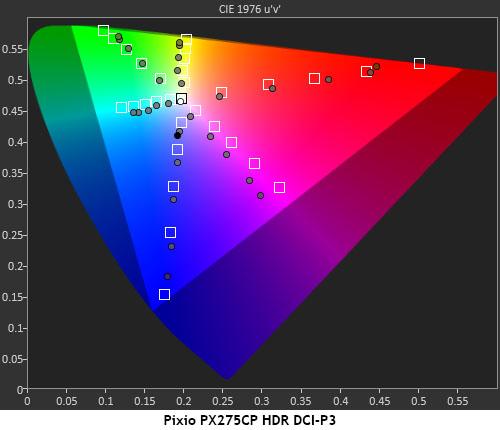Why you can trust Tom's Hardware
Our HDR benchmarking uses Portrait Displays’ Calman software. To learn about our HDR testing, see our breakdown of how we test PC monitors.
The PX275CP includes HDR10 support but must be switched manually between signal types. Though there is no additional contrast available for HDR content, it looks a bit more colorful thanks to some clever decisions on Pixio’s part.
HDR Brightness and Contrast



The PX275CP doesn’t put out any more light in HDR mode versus SDR. The other screens are superior in this regard. It also does nothing different to its black levels so contrast is only a tiny bit higher at 996.9:1.
You can see that the Monoprice and MSI screens also track the same dynamic range for HDR and SDR. But the Razer, Acer and Viotek monitors employ dynamic features to up the quality for HDR. The only benefit to using HDR with the Pixio is its slightly higher color saturation. I’ll show you that result below.
Grayscale, EOTF and Color


The PX275CP’s HDR grayscale runs a bit blue but isn’t too far off the mark. The error is most obvious around the tone map transition point at 60% brightness. There is no way to fix this issue as all picture controls are grayed out. EOTF luminance tracking is a bit dark in tone, which slightly improves perceived contrast. Shadow detail is very visible at the lowest levels because they are too light below 10% brightness.
The good part comes with the PX275CP’s HDR color tracking. Though it is not capable of rendering the entire DCI-P3 gamut, it hits the inner targets up to 80%. Since most content lives between 20 and 80% saturation, the HDR picture is a tad more colorful. This is a smart choice on Pixio’s part to make a standard gamut monitor look better in HDR mode without including a wide gamut option.
Get Tom's Hardware's best news and in-depth reviews, straight to your inbox.

Christian Eberle is a Contributing Editor for Tom's Hardware US. He's a veteran reviewer of A/V equipment, specializing in monitors. Christian began his obsession with tech when he built his first PC in 1991, a 286 running DOS 3.0 at a blazing 12MHz. In 2006, he undertook training from the Imaging Science Foundation in video calibration and testing and thus started a passion for precise imaging that persists to this day. He is also a professional musician with a degree from the New England Conservatory as a classical bassoonist which he used to good effect as a performer with the West Point Army Band from 1987 to 2013. He enjoys watching movies and listening to high-end audio in his custom-built home theater and can be seen riding trails near his home on a race-ready ICE VTX recumbent trike. Christian enjoys the endless summer in Florida where he lives with his wife and Chihuahua and plays with orchestras around the state.